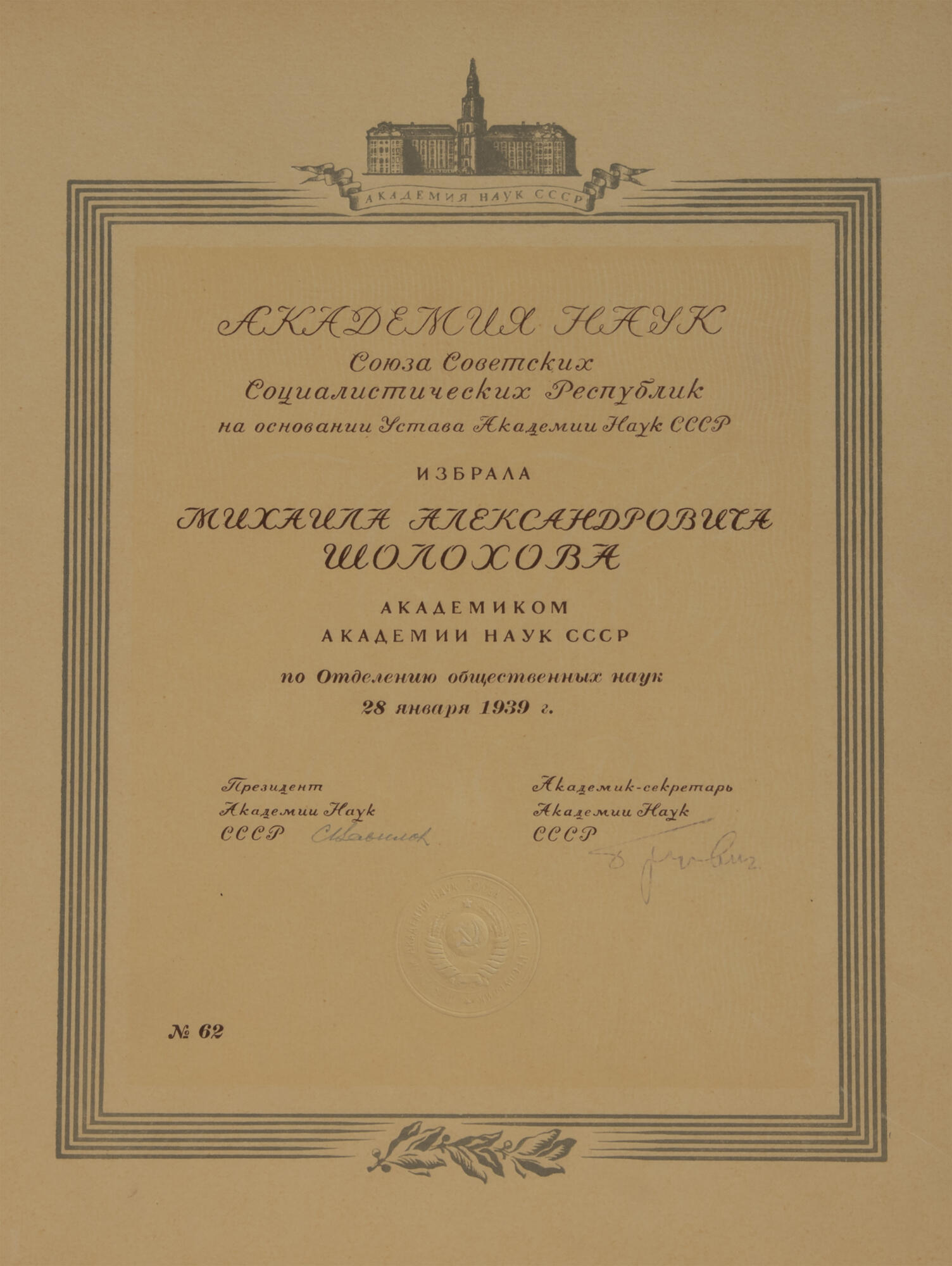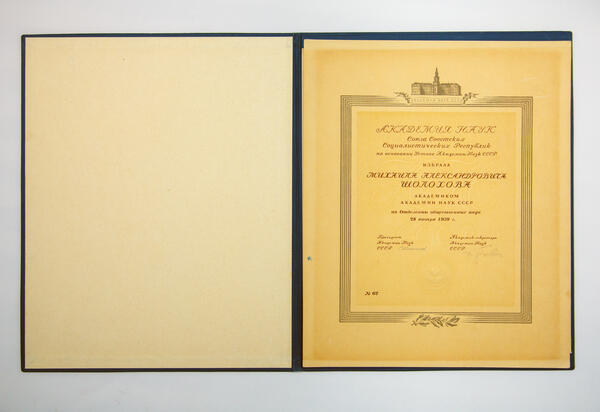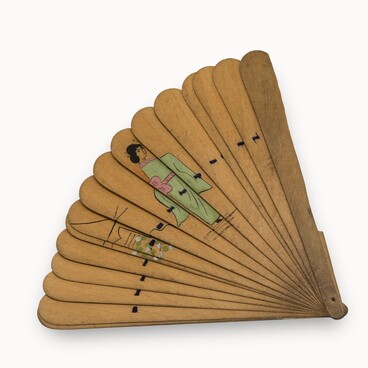The Academy of Sciences and Arts was founded by Peter the Great in 1725. Aimed at bringing together the most prominent Russian individuals, it initially included mostly foreign scholars. Later, they were joined by Russian scientists, including Mikhail Lomonosov. The organization went under various names over the years, including the Imperial Academy, and the Russian Academy of Sciences. Two centuries after its foundation, it became known as the Academy of Sciences of the Soviet Union.
Mikhail Sholokhov was nominated by the Moscow Institute of Philosophy, Literature and History named after Chernyshevsky in 1938. The Pushkin House, the Institute of World Literature, and other organizations supported this idea. Having examined Sholokhov’s novels, the panel of experts noted that he was a brave innovator and one of the brightest representatives of Soviet literature.
On January 28, 1939, the general meeting of the Academy elected Sholokhov a full member of the Academy of Sciences of the Soviet Union and issued diploma No. 62 to the writer. The document was printed on a special form and signed by the president and the secretary of the Academy of Sciences. The dust cover features an embossed logo of the Soviet Academy of Sciences.
Soon after being elected a member of the Academy, Sholokhov was also included in the editorial staff of “The History of Western Literature” and “The History of Russian Literature”. The writer participated in preparing the first five volumes of this monumental work and contributed to other projects, including the 150th anniversary of Nikolay Chernyshevsky.
After the Great Patriotic War, the Council of People’s Commissars of the Soviet Union issued the decree “On building country houses for the full members of the Academy of Sciences of the Soviet Union”. It meant that all Academy members were provided with land plots for use in perpetuity, free of charge. Sholokhov was offered to choose between the Moscow and Leningrad regions. However, he requested the authorities to allow him to use the provided funds for building a house in the Vyoshenskaya stanitsa of the Rostov region. His request was satisfied, and the writer received permission to build a house in Vyoshenskaya according to the project approved by the Central Committee.
Mikhail Sholokhov was nominated by the Moscow Institute of Philosophy, Literature and History named after Chernyshevsky in 1938. The Pushkin House, the Institute of World Literature, and other organizations supported this idea. Having examined Sholokhov’s novels, the panel of experts noted that he was a brave innovator and one of the brightest representatives of Soviet literature.
On January 28, 1939, the general meeting of the Academy elected Sholokhov a full member of the Academy of Sciences of the Soviet Union and issued diploma No. 62 to the writer. The document was printed on a special form and signed by the president and the secretary of the Academy of Sciences. The dust cover features an embossed logo of the Soviet Academy of Sciences.
Soon after being elected a member of the Academy, Sholokhov was also included in the editorial staff of “The History of Western Literature” and “The History of Russian Literature”. The writer participated in preparing the first five volumes of this monumental work and contributed to other projects, including the 150th anniversary of Nikolay Chernyshevsky.
After the Great Patriotic War, the Council of People’s Commissars of the Soviet Union issued the decree “On building country houses for the full members of the Academy of Sciences of the Soviet Union”. It meant that all Academy members were provided with land plots for use in perpetuity, free of charge. Sholokhov was offered to choose between the Moscow and Leningrad regions. However, he requested the authorities to allow him to use the provided funds for building a house in the Vyoshenskaya stanitsa of the Rostov region. His request was satisfied, and the writer received permission to build a house in Vyoshenskaya according to the project approved by the Central Committee.



